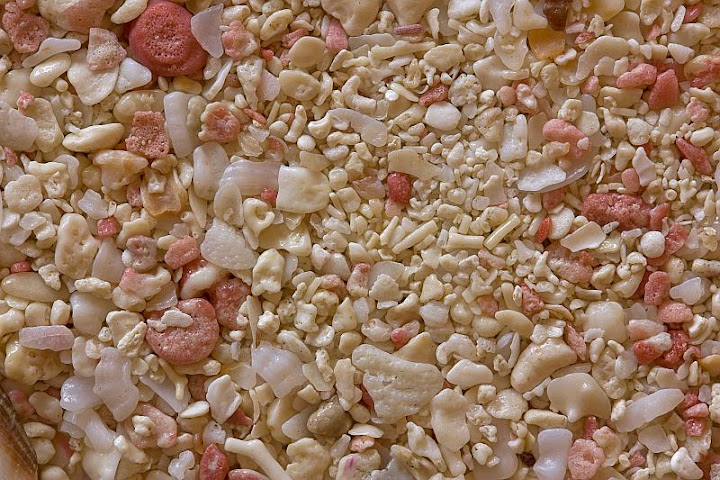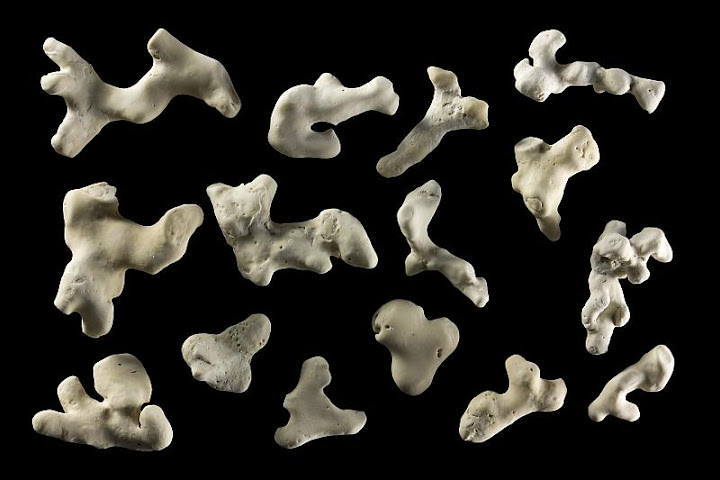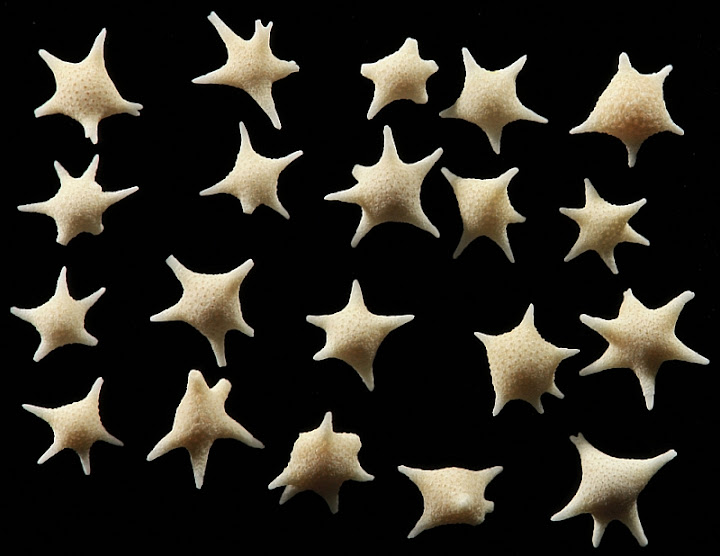Coral sand is generally light-colored sand (or gravel) which is mostly composed of calcareous fragments of biogenic origin. The term “coral sand” is pretty loosely defined and understood in several different ways.

This sand sample is from Bermuda. Pink foraminifera Homotrema rubrum gives pink color to the beaches of Bermuda. Corals are light-colored but not all of the pieces are fragments of coral reefs. Molluscs, other foram species, and even echinoids (sea urchin spine in the lower left) are also present. Width of view 32 mm.
Scientists usually prefer to talk about biogenic sand instead of coral sand. Why? Because in many cases coral sand is not composed of fragments of coral reefs. Even if corals are present, they often form only a part and not necessarily a dominant part of the sand.
Real coral sand only occurs in the vicinity of coral reefs. These reefs are located roughly between 30° N and 30° S latitudes. Look at the map below to see that corals build reefs in warm waters. They are abundant in the Caribbean, around Hawaii, Polynesia, Indonesia, Indian Ocean, Australian north coast, the Red Sea, etc.
However, several other organisms also prefer to live there. Hence, pure coral sand is pretty hard to find. This is another reason why it is so difficult to draw a line between coral sand and biogenic sand.

Locations of coral reefs are marked with red dots. Credit: University of South Florida Institute for Marine Remote Sensing.
Coral sand is composed of calcareous (few organisms have siliceous tests) bits and pieces of corals, foraminifera, molluscs, sea urchins, algae, sponges, etc. Most of them are no reef-builders. They are either benthic (live at the bottom of the sea) or planktonic (drift freely) marine organisms. Most examples of coral sand (even if they contain no coral fragments) are from low-latitude beaches. Carbonate sand forming in colder water is an interesting curiosity. Maerl, for example, is a type of biogenic sand that is composed of coralline algae and occurs in several beaches in Western Europe, especially Ireland.
Not all carbonate sands are biogenic, let alone made of corals. Carbonate sand may be composed of limestone fragments or ooids which are small spheroidal and well-rounded grains that may occur together with biogenic grains, especially in the Caribbean Sea and the Persian Gulf.

Coral sand from Molokai (Hawaii) is composed mostly of well-rounded pieces of corals and foraminifera (Amphistegina). Width of view 30 mm.

Gravel-sized pieces of coral reef from South Korea (Jeju-do Island). Only few grains are not coral fragments (one mollusc shell in the middle). Width of view 50 mm.

Some coral fragments with a more characteristic shape picked from the Korean sand sample shown above. Width of view 7 cm.

These grains look very much like coral fragments from Korea but they are not corals at all. These are pieces of coralline algae from Ireland (sand from the Mannin Bay). Width of view 6 cm.
Close-up picture of Mannin Bay “coral sand”.

Coral sand from the Caribbean (Tankah, Mexico) is composed of various biogenic grains (lots of gastropods in addition to corals). Width of view 25 mm.

Foraminifera are very widespread organisms (amoeboid protists) that usually have calcareous tests. Baculogypsina sphaerulata is one of the most spectacular looking of them. Sand where such tests are abundant is known as star sand. Ryukyu Islands, Japan. Whether it is a coral sand is debatable, of course. Width of view 15 mm.

These are also forams (Sorites), this time from Cyprus in the Mediterranean which is too cold for corals during the winter months. Width of view 20 mm.

This sand is clearly made of carbonate grains but it is neither coral nor biogenic sand. It is lithic sand from the Krk Island (Croatia) composed of limestone fragments.

This is ooid sand from the Persian Gulf (Abu Dhabi, The United Arab Emirates). Ooids have no direct relations with coral fragments. Ooids are generally very well-rounded which helps to identify them.

This is an example of “coral sand” from Zakynthos, Greece. These sand grains are clearly biogenic (forams, gastropods, sea urchins, ostracods, clams, coralline algae) but there are no corals. Want to know who is who on this picture, then check this post: Sand full of mysteries.
very nice
very nice and thanks
thanks